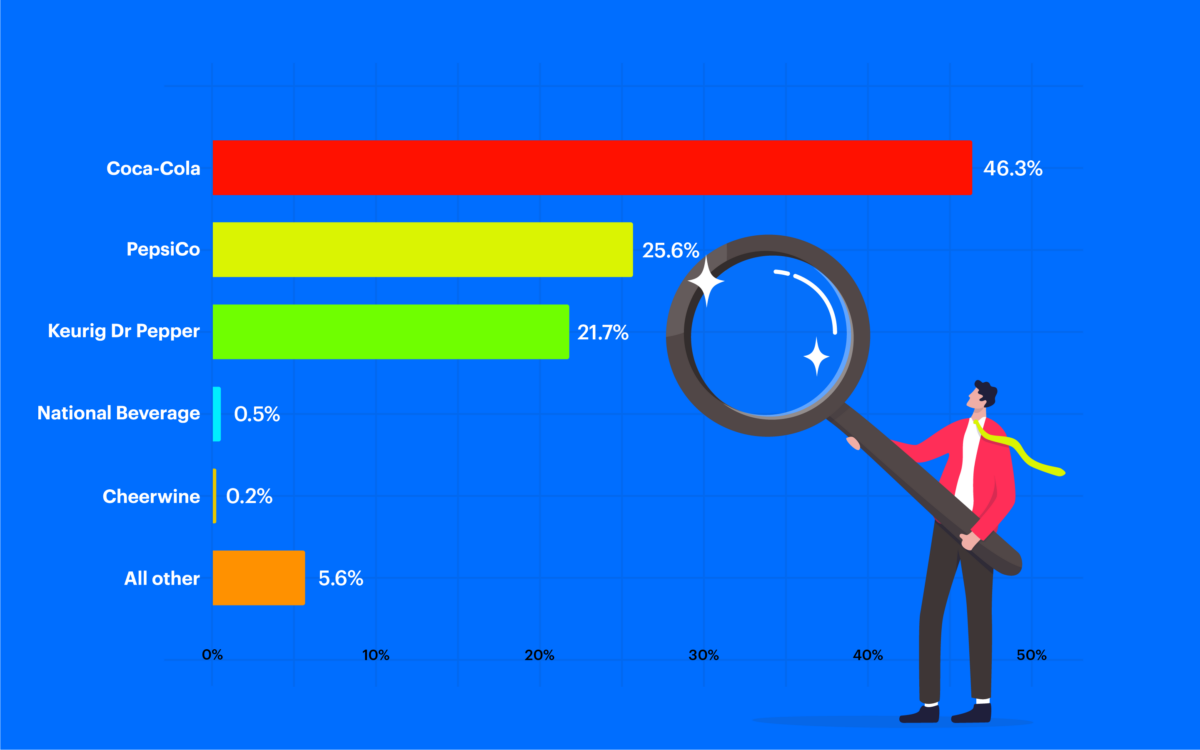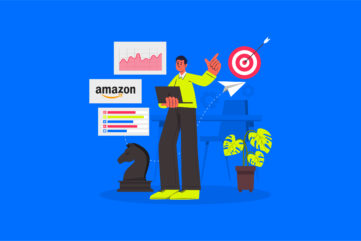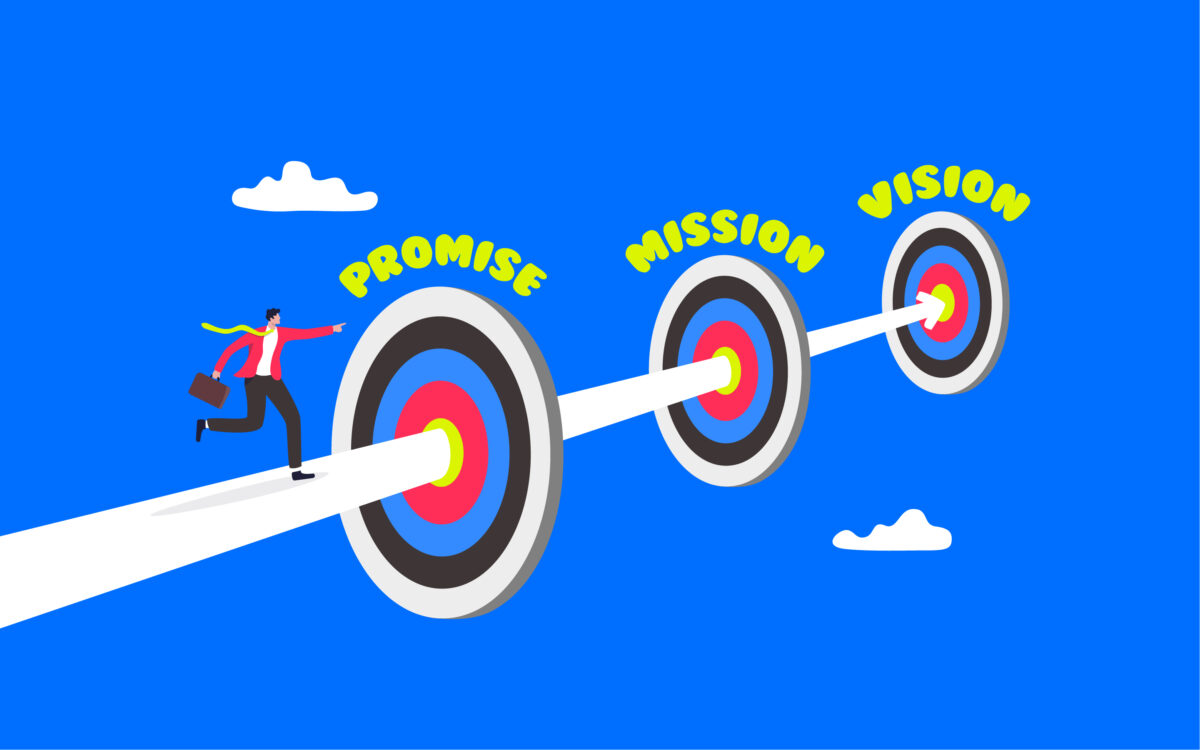The Coca-Cola brand positioning strategy, segmentation and targeting

The Coca-Cola brand positioning strategy offers an incredible insight into the power of effective brand positioning in any industry. With the Coca-Cola positioning strategy, the company has effectively set itself apart from every major brand in its industry. Plus, it’s been able to generate a strong emotional connection with every segment of its target audience.
While dozens of soft drink companies have appeared in the world throughout the years, few have been able to achieve the acclaim or brand equity of Coca-Cola.
Today, the soft drink market is expected to reach a value of more than $592.86 billion by 2028, and a large portion of this landscape is owned by the Coca-Cola brand.
In fact, the Coca-Cola Company has a market value of around $260.42 billion, putting it leaps and bounds ahead of other well-known organizations like Pepsi.
What’s more, Coca-Cola is one of the most recognizable companies in the world. Around 94% of the world’s population is familiar with the brand.
So, how did the company achieve such incredible results? Why has its positioning strategy been so essential to its growth, and how does it reach such a wide and diverse audience?
Read on for a complete guide to Coca-Cola’s brand positioning strategy.
Introducing the Coca-Cola brand positioning strategy
Before we start looking at the positioning, market share, and targeting strategies of the Coca-Cola brand, it’s worth getting to know the company a little better.
The Coca-Cola brand positioning strategy has elevated the company’s presence in its industry to incredible heights. However, it wasn’t always the soft drink giant we know today.
Initially, the company was founded in 1886, by a man named John Pemberton, who created a patent medicine which featured the African Kola nut. Pemberton initially claimed the drink was a cure for a range of diseases, including morphine addiction, nerve disorders, and indigestion.
It wasn’t until much later that Coca-Cola became a true soft drink company. Today, it’s widely regarded as the biggest soft drink in the world, with coke products sold in 200 countries worldwide. In 2020, it was also named the world’s sixth most valuable brand.
Aside from selling pre-packaged products, such as original coke and diet coke, the Coca-Cola company also operates on a B2B basis, producing concentrate which is sold and licensed to bottlers and companies around the world.
Though the nature of the Coca-Cola product has evolved over time, the company has achieved phenomenal success by taking an emotional, evocative approach to sales and marketing.
Rather than focusing exclusively on showing the features of its products, Coca-Cola has dedicated itself to the idea of “selling happiness”.
Let’s take a closer look at the Coca-Cola positioning strategy, brand promise, and target market.
The Coca-Cola positioning strategy: Coca-Cola positioning statement
As you may already know, brand positioning is the strategy of determining how a product will differentiate itself from the competition in a wider market. Though the soft drink market hasn’t always been as huge as it is today, competition has been fierce for the Coca-Cola brand.
As a result, the giant company has been forced to think carefully about how they can demonstrate both points of parity with other leading brands, and unique selling points.
Most beverage brands take a similar approach to brand positioning. Look at the wide range of companies in the industry today, and you’ll notice many organizations, from Pepsi to Red Bull, all highlight concepts like refreshment, and vitality.
However, Coca-Cola goes beyond the basics of simply promising a thirst-quenching drink. The company positions itself as the “original” soft drink company, thanks to its incredible history and innovative background in the landscape.
It also focuses heavily on building emotional relationships with its audience.
Coca-Cola promises customers happiness, joy, and the opportunity to be part of a wider, global community. The advertising and branding strategies used by the company are all about community, passion, and experience. The company also positions itself as a “premium” brand.
While there are many cheaper products on the market today, Coca-Cola validates its higher price point by focusing on unique flavor, and exceptional brand equity. What’s more, unlike other beverage brands, Coca-Cola is always experimenting.
It introduces new versions of its products consistently, to appeal to a wide range of different generations and target audiences.
The Coca-Cola brand promise, vision, and mission
Establishing a strong brand promise can be complicated in the business world. In a competitive environment, it’s tempting to make hyperbolic claims to draw the attention of various categories of customers.
However, a brand promise needs to be realistic, emotive, and engaging.
In the case of Coca-Cola, its brand promise is to “Refresh the world in mind body and spirit”. Coca-Cola also wants to “Inspire moments of optimism; to create value and make a difference.”
This might seem like an ambitious pledge, but it’s something Coca-Cola has been able to live up to as a market leader. Instead of mentioning soft drinks, Coca-Cola builds its promise around a desire to change the world, instill happiness, and make a difference.
This has ensured the company can effectively branch out into a range of different segments and product categories, without breaking its brand promise.
What’s more, to deliver on its claims, Coca-Cola invests heavily in its team, its research facilities, and its strategies for reaching customers in different countries and landscapes.
For instance, Coca-Cola knows a diverse and engaged workforce is crucial to delivering an exceptional customer experience. As such, the company leverages a worldwide team of employees, rich in different talents and ideas.
They also encourage their workforce to be part of the brand, inspiring significant employee advocacy and pride.
The 2013 “Share a Coke” campaign, for instance, is an excellent example of how Coca-Cola leverages its team to deliver its promise. The company encouraged employees to act as ambassadors, taking part in the “Share a Coke” campaign with broad social media, digital, and offline campaigns.
Alongside leveraging its incredible workforce, Coca-Cola also invests heavily in innovation. It experiments with new products, taking insights from its target audience to consistently expand its product line and adapt to new needs.
For example, it introduced low-caffeine and zero sugar versions of its products for more health-conscious customers.
Coca-Cola mission statement, visions, and values
The Coca-Cola brand positioning strategy, as well as its wider company promise, are underpinned by a clear mission, vision, and set of values. To inspire trust in its target audience, the company shares these details on its website, as well as embedding them into marketing campaigns.
The Coca-Cola mission statement
According to Coca-Cola, their mission statement is to refresh the world, inspire happiness, create value, and make a difference. Coca-Cola wants to satisfy beverage consumers around the world, with a premium product that outstrips the competition.
At the same time, it’s committed to generating sustainable economic, social, and environmental value, through the use of innovative business models.
Coca-Cola vision statement
Coca-Cola’s vision statement serves as the framework for its positioning strategy and roadmap for growth. The company wants to craft the brands and drinks that people love worldwide.
To achieve this vision, Coca-Cola focuses on:
- Productivity: Being a highly effective, agile organization.
- Profit: Maximizing returns to shareowners.
- Planet: Being a responsible company with a sustainable focus.
- Partners: Nurturing a network of customers and suppliers.
- Portfolio: Delivering a wide range of different drinks and products.
- People: Being a great place to work where employees are inspired and engaged.
Coca-Cola’s values
Finally, Coca-Cola’s values play a crucial role in the Coca-Cola positioning strategy, and how the company connects with its audience.
The core values are:
- Quality: Delivering exceptional, premium products.
- Diversity: Being as inclusive as its brands.
- Passion: Committing to innovation in heart and mind.
- Accountability: Taking responsibility for growth.
- Integrity: Honesty, transparency, and trust.
- Collaboration: Leveraging collective creativity.
- Leadership: Taking charge of worldwide change.
The Coca-Cola target market: Coca-Cola’s target audience
Coca-Cola’s marketing strategies and brand positioning efforts are all tied closely to its desire to connect with a wide audience. Although the company was launched in the United States, Coca-Cola products have become a worldwide phenomenon.
As a result, this successful brand has a broader targeting strategy than most. It focuses on a huge variety of different niches, thanks to its wide range of products.
While the core market of the Coca-Cola brand appears to be younger customers, it can effectively reach target customers from all ages and creeds. Each new product introduced by the brand has increased its audience size.
For instance, the Coca-Cola energy drinks appeal to younger customers, searching for vitality in the soft drink industry. Alternatively, Diet Coke and zero-sugar products are more appealing to older market segments who want to preserve their health.
Coca-Cola covers almost the entire socio-economic spectrum with its global brand, appealing to average to high-income earners. It resonates with customers who want to achieve youthfulness, fun, and adventure, with a strong leadership approach.
The broad market of the Coca-Cola positioning strategy is also reflected by the variety of product packaging sizes and styles in its product portfolio. Options are available for families, individuals, and on-the-go consumption.
Coca-Cola market segmentation: Customer segments
To further understand the Coca-Cola marketing strategy and the positioning efforts of the brand, it’s worth taking a deeper dive into its segmentation efforts. Like most brands, the Coca Cola Company focuses on a variety of demographic, behavioral, geographic, and psychographic factors.
Here are some of the core components of Coca-Cola’s market segmentation strategy:
Coca-Cola demographic segmentation
As mentioned above, Coca-Cola’s demographics include a broad range of older customers, and younger buyers alike, ranging from around 10 to 40 years old. The wide range of products offered by the company means it can appeal to young people and older adults alike.
What’s more, Coca-Cola’s marketing mix includes imagery of people from all age groups, and investments in various different types of communication channels. Coca-Cola invests in print and traditional media, as well as television ads and digital marketing.

Coca-Cola geographic segmentation
Coca-Cola has an audience in regions all over the world, although typical customers usually live in urban settings. The EMEA leads in unit sales of Coca-Cola products at present, with a 28% share in Europe, the Middle East and Africa.
However, it’s followed closely by the United States and Northern American markets. North America also accounts for the highest revenue distribution share of Coca-Cola (36.5%). The marketing strategy of Coca-Cola also adapts to different tastes for people in various regions.
The company produces specific products for certain countries, and changes its messaging and imagery to reflect the values of customers in locations around the world.
Coca-Cola behavioral segmentation
From a behavioral perspective, Coca-Cola targets customers who are easygoing, ambitious, and fun-loving. The company connects not just with loyal customers who drink its products on a routine basis, but also more irregular customers, who only enjoy the beverages from time to time.
Coca-Cola wants to inspire people from all walks of life to experience the “Coke side of life”. It also invests heavily in research campaigns, to collect insights into customer perspective and intent.
Coca-Cola psychographic segmentation
From a psychographic standpoint, Coca-Cola connects with customers who fall into the categories of: “Aspirer”, “Succeeder” or “Explorer”. The Coca-Cola target market also has a strong focus on the “conscious progressive” personality type.
In other words, Coca-Cola wants to reach out to customers who value independence and personal growth. This is reflected in the company’s marketing campaigns, like “Share a Coke”, as well as the company’s approach to constant growth, sustainability, and innovation.
Coca-Cola positioning: Key market competitors
Coca-Cola is by far the biggest company in the soft drinks market today. However, the phenomenal brand value and positioning of the brand hasn’t stopped it from attracting competitors.
As the world’s largest beverage company, Coca-Cola has experienced intense competition from a number of brands.
Perhaps the most significant competitor to Coca-Cola is PepsiCo. The two companies share a similar product portfolio and target market, and have been strong rivals for decades. Pepsi even conducted blind tests during its marketing campaigns to prove customers preferred Pepsi over Coke.
In 2021, Coca-Cola ranked as the top carbonated soft drink in the US, with a market share of 46.3%, compared to PepsiCo’s 25.6%.

Though PepsiCo’s products provide the toughest competition in the market for Coca-Cola, the company also competes against a range of other soft drink brands, including Keurig Dr Pepper, Tetra Pak juice cartons, Red Bull, and many others.
What is Coca-Cola’s marketing strategy?
To understand the Coca-Cola positioning strategy fully, we also need to take a closer look at the company’s approach to marketing. Indeed, it’s the unique marketing strategies of Coca-Cola that has helped its brands gain such a huge competitive advantage in the industry.
Coca-Cola’s marketing stretches across a broad range of channels and methodologies. There are Coca-Cola television ads, celebrity endorsements, brand marketing campaigns, and even a range of digital strategies designed to enhance the company’s brand identity.
Though the marketing campaigns of Coca-Cola have changed significantly over the years, the company consistently focuses on selling a lifestyle promise, not just a product.
The brand’s slogans throughout the years, such as “Real Magic”, “Open Happiness” and “Choose Happiness” are all evidence of this.
Similar to its rival brands, Coca-Cola also places a strong focus on exciting customers with new products. The company has produced a range of different and unique products, including Coca-Cola coffee and energy drinks, and uniquely flavored items.
To appeal to customers in a wide range of geographic markets, Coca-Cola also invests in separate marketing campaigns for segments worldwide. Ads for Coca-Cola in India have focused on cricket matches, while ads in the UK and US address other sports like football.
Innovative and engaging campaigns are core to the Coca-Cola positioning strategy too. One of the best examples is the “Share a Coke” campaign, which allowed customers to seek out personalized bottles and cans of coke with their own name.
This campaign encouraged a massive increase in sales, as well as significant digital hype, thanks to the #Shareacoke hashtag on social media.
Additionally, the company also places a strong focus on partnering with other companies and sponsorship deals. It’s been involved with major events like the Olympic Games, as well as shows like American Idol.
What is the Coca-Cola “One Brand” strategy?
One particularly interesting component of Coca-Cola’s brand positioning strategy is its focus on unifying its product collection. In 2015, the company announced Coca-Cola’s brands would be joining together in a new “One Brand” strategy for its product variants.
This essentially meant the Coke company began adjusting its packaging and marketing materials to showcase all of the different variations of its products in a unified format.
The move also convinced the company to take a different approach with its slogan, switching from “Open happiness” to “Choose happiness”. According to the company, this was an effort to show customers they had a choice over the products they consumed, and inspire independence.
The strategy followed research commissioned by the company into its marketing efforts. Reports found that many consumers were unclear about the features of each soft drink product produced by the company, and needed further insights.
As part of the One Brand strategy, Coca-Cola invested in additional marketing materials designed to inform and educate old and young adults alike on the features of its product portfolio.
It even adapted its messaging, moving away from the “Regret nothing” campaigns for Diet Coke, to focus instead on communications with more detail into ingredient and product information.
The company pointed out that its strategy wasn’t just going to change its marketing and packaging strategies, but its entire approach to showing the points of difference between its products.
According to Coca-Cola, the aim was to show customers that though they could get the same positive experience from every item in its portfolio, it also catered to different needs.
Exploring Coca-Cola’s brand positioning strategy
For a long time, the Coca-Cola brand positioning strategy has helped the company to stand out among countless competitors in an ever-growing industry. However, the success of the Coca-Cola brand hasn’t happened by chance.
Everything, from the company’s logo design to its use of different packaging and product options throughout the world has influenced its growth.
From day one, Coca-Cola has aimed to establish itself not just as a thought leader, but as a lifestyle company, committed to delivering unique experiences to people from every region and segment.
Coke’s brand is built partially on heritage, but it has also benefitted from significant innovation over the years. The company is constantly exploring new markets, and new ways to showcase its unique selling proposition.
More than anything else, the success of the Coca-Cola company has come from its ability to connect with its audience. By focusing on not just a product, but an emotional experience in its marketing techniques and branding, this business has become a worldwide household name.
Learn more about how to build your own phenomenal positioning strategy by contacting Fabrik Brands today.
Fabrik: A branding agency for our times.
Now read these:
—Discover the best Coke commercials ever
—How Coca-Cola turned Christmas red

























